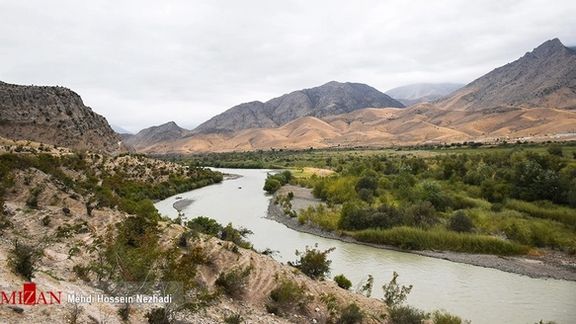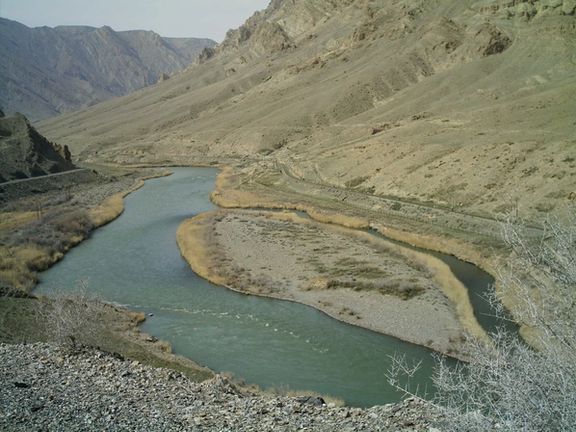Iran Denies Radioactive Pollution Of Aras River By Armenia

Media reports about possible radioactive contamination of Aras River in Iran’s northwestern borders by Armenia’s nuclear power plant has led to widespread concerns.

Media reports about possible radioactive contamination of Aras River in Iran’s northwestern borders by Armenia’s nuclear power plant has led to widespread concerns.
However, Iran's Nuclear Safety Center has refuted the reports. In a statement on Tuesday, the center which is an affiliate of Atomic Energy Organization of Iran (AEOI) said the river Aras is monitored at least once a year for radioactive pollution and that the last survey in March this year did not indicate any radioactive pollution as claimed by Payam-e Ma newspaper on Monday.
Quoting a paper published earlier by the Border Studies Research Journal of the Iranian police, Payam-e Ma on Monday suggested that the extremely high occurrence of various types of cancers and liver diseases in Ardabil Province bordering the Republic of Azerbaijan, could be attributed to radioactive pollution of the Aras River emanating from Armenia’s nuclear power plant situated in Metsamor hundreds of kilometers to the west.
Payam-e Ma’s article followed a warning on June 12 by Mahmoud Abbaszadeh-Meshkini, a member of the Iranian Parliament’s National Security and Foreign Policy Committee who claimed that effluent from the power plant which was polluting the river could be the cause of the high occurrence of cancer in Iran’s Ardabil.
However, the cause of the high rate of cancer in the area is hard to establish. It is not clear whether the phenomenon is related to the environment or has other underlying reasons. But concerns linger on as many do not trust the Iranian government on the issue of radioactive contamination.

A deputy health minister, Dr. Reza Malekzadeh, told the media in October 2020 that a longitudinal study carried out over a period of 20 years about the occurrence of stomach cancer in Ardabil Province has shown a rate of 50 per 100,000 of the province’s population. This is the highest rate in the country.
However, the Nuclear Safety Center’s statement said the Armenian power plant is too far from the Aras for its effluent to reach the river and pollute it as claimed.
The Aras River which rises in Turkey forms part of Iran's border with its northwestern neighbors, Armenia and Azerbaijan, before flowing into the Kura River in Azerbaijan.
“The Aras River is being continually monitored for radioactivity and other required substances,” the statement said and added that the center will establish an online water monitoring station in the said area very soon to carry out tests.
In the past ten years, Iranian officials have repeatedly denied radioactive pollution of the Aras River by the Armenian nuclear plant.
Metsamor Nuclear Power Plant which is the only nuclear power plant in the South Caucasus was built in the 1970s. The two units of the plant provide a total of 815 MW of electricity and supplied approximately 40 percent of Armenia’s electricity in 2015.

The plant has been a source of environmental concern since the Spitak Earthquake in 1988 which led to its closure until 1995. The plant has been classified by the EU as the oldest and least reliable of all the 66 reactors built by the former Soviet Union.
The International Atomic Energy Agency (IAEA), however, said in 2011 that the plant posed an “acceptable” level of risk to the environment and could “in principle” operate beyond its design life span.
The media have also warned that heavy metals in the effluent of other industries in Armenia, Turkey and Iran have been polluting the river for many years. Most of the pollution, however, is apparently caused by Armenian copper mines and plants in the area.
Firuz Ghasemzadeh, spokesman of the Iranian Water Industry, told the Iranian Labour News Agency (ILNA) on May 10 that the Iranian ministry of energy and both Iran’s and Armenia’s departments of environment had been investigating the pollution caused by the Armenian mines.
According to Ghasemzadeh, sources of pollution were eliminated by installation of water treatment facilities, but occasional pollution was still possible. He also stressed that Armenia has given assurances that it would control the sources of pollution.